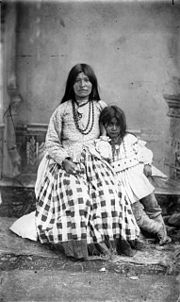
The True Story Behind the Legend of Geronimo

**The Historical Intersection of Geronimo and Elbridge Ayer Burbank: A Closer Look**
In 1897, amidst the broader narrative of the Plains Indian Wars and the evolving educational policies regarding Native Americans in the United States, the renowned painter Elbridge Ayer Burbank immortalized the legendary Apache leader Geronimo in a vivid portrait. This encounter, set against the backdrop of Fort Sill in Indian Territory, serves as a poignant reflection of the changing perceptions and representations of Indigenous peoples during that era.
**The Portrait and Its Historical Context**
Geronimo, wrapped in a striking red blanket, gave Burbank the privilege of being the first painter to capture his likeness—a unique position considering Geronimo’s prior engagements mostly with photographers. This portrait was part of a larger series commissioned by Burbank’s uncle, Edward Everett Ayer, who was affiliated with Chicago’s Field Museum. At the time, Geronimo was a prisoner following his surrender to the US government. This marked the end of significant conflicts during the Plains Indian Wars, allowing the settler colonial state to envision a future of domination extending to the west of the Mississippi.
This period also heralded advancements in the US educational system’s approach to Indigenous peoples. Richard Henry Pratt’s strategy to assimilate Native Americans through education—a concept famously summarized as “Kill the Indian, save the man”—emerged from his experiences at Fort Marion, Florida, where he oversaw Indigenous prisoners. These efforts crystallized with the establishment of the Carlisle Indian Industrial School in Pennsylvania in 1879.
**Cultural Shifts and Representation**
The portrayal of Indigenous peoples was undergoing a transformation during Burbank’s time. The romanticized notion of the noble savage began yielding to a more ethnographic approach, aligning with the field of salvage anthropology prevalent then. Burbank’s portraits, of which he completed over 1,000 from more than 100 nations, captured this transition. His works presented Native Americans not as mythical figures but as subjects of anthropometric interest, reflecting the settler society’s aim to document the presumably vanishing “real” Americans.
**Artistic Choices and Interpretations**
Burbank’s choice of painting over photography allowed for an exploration beyond mere likeness. Through color and composition, he brought forth vibrancy that photography could not. The small canvases—just 10 by eight inches—featured Geronimo’s autographs, authenticating their cultural significance. Burbank’s knowledge of German realism, gleaned from Munich, informed his detailed and ethnographic approach, distinguishing his work from contemporaries like Henry Farny, who leaned towards romanticism.
**Legacy and Reflections**
The portrait of Geronimo by Burbank remains emblematic of the complexities surrounding Indigenous representation. It captures a moment of realness wrapped in layers of cultural and historical significance. As Indigenous identity became a subject of colonial action and myth-making, artists like Burbank played pivotal roles in shaping the visual and cultural narratives. However, it serves as a reminder, highlighted by thinkers like Gerald Vizenor, that “the indian is the simulation of ethnographic portraiture.” The representation of Indigenous peoples was often inextricably linked to colonial imaginary and invention, raising questions about authenticity and identity.
In summary, the art of Elbridge Ayer Burbank and his portrait of Geronimo encapsulate rich intersections of history, cultural perception, and the artistic endeavor to document a world that, for many, was teetering on the brink of profound transformation. This dialogue between artist and subject underscores broader narratives of power, identity, and representation that continue to resonate.